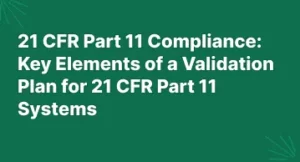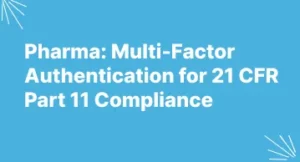Discover What Contract Lifecycle Management Is & How It Benefits Businesses
Introduction
Contract Lifecycle Management (CLM) is a process that helps businesses effectively manage, control and organize the different stages of a contract’s lifetime. It is a system that streamlines and automates the process of creating, managing, monitoring and renewing contracts.
From initiation to completion, CLM ensures accuracy and compliance with all the involved parties while limiting risks and ensuring maximum efficiency and cost savings.
In this guide, you will learn about the CLM process and how it can help your business save time, money and minimize risk.
Contract Lifecycle Management (CLM) is an important part of any business’s operations. It entails managing the entire process of creating, executing, and analyzing contracts in order to help businesses reduce costs and risks associated with legal commitments.
The CLM process involves three distinct stages, each with its own set of goals and procedures:
- Negotiate & Create Contract: This stage involves identifying events that trigger the need for a contract, setting up negotiation processes, and creating an effective document structure. It also involves ensuring that all versions of the contract are carefully tracked.
- Pre-Execution & Execution Process: At this stage, workflow strategies should be developed in order to ensure that deadlines, tasks, and other responsibilities are met. Automated reminders can also be used to help keep things organized and on track. Data capturing capabilities can also be utilized to ensure accuracy and compliance.
- Renewal & Extension: The final stage involves setting up automatic renewals and extensions in order to reduce associated costs. This stage also includes tracking changes, making sure deadlines are met, and handling customer relations.
Each of these stages require careful consideration and strategic planning in order to ensure that contracts are handled correctly and that the company remains compliant with laws and regulations. By properly managing the CLM process, businesses can reduce their risk and save time and money in the long run.
When it comes to creating contracts, there are various events that can trigger the process. This can range from client requests to business opportunities, and other points of contact. The individual or team who initiates the negotiation process is typically the one responsible for managing the contract as it advances. The document structure and versioning should also be taken into consideration, as it will form the foundation of any agreement. Additionally, compliance requirements should always be taken into account to make sure that the contract meets all standards. Furthermore, the negotiation process itself is important to ensure both parties understand and agree to the specific terms.
Pre-Execution & Execution Process
Contracts must pass through the pre-execution and execution stages to be finalized. These stages involve reviewing and signing the contract, ensuring all parties agree to the terms and conditions of the agreement. It is essential that the process is efficient, accurate, and compliant with legal regulations. There are certain workflow strategies and techniques that can be used to ensure this success.
One way to ensure that contracts proceed to the next stage is through automated reminders. A CLM system can automatically send out follow-up emails to let all parties know when it is time to review and sign a contract. This ensures that nothing falls through the cracks and the process is completed in a timely manner.
Another way to ensure accuracy during the pre-execution and execution stages is by capturing all data on the agreement. This includes information such as contractual terms and conditions, signatures, dates, etc. Capturing this data quickly and accurately is essential to the success of the contract.
Through using these strategies and techniques, businesses can improve efficiency, accuracy, and compliance during the pre-execution and execution stages of the contract lifecycle management process.
Automation
Automation allows businesses to speed up the process times and reduce costs associated with contract management, while ensuring accuracy for the agreements. Automating CLM processes such as document formatting, document indexing, document assembly, electronic signature and signatory routing helps businesses save time, money, and labor costs.
Automation also helps reduce human errors, which are common in manual contract management systems. Automated tools can help detect inconsistencies, such as missing data fields, wrong information, etc., and alert the user so that corrections can be made prior to execution. This helps improve accuracy and reduce risks associated with errors.
Automation also helps increase visibility into the contract lifecycle. Automated reporting helps keep track of all contracts, see how close they are to being completed and identify potential issues.
Contract Storage and Management
Organizing and managing contracts can be a challenging task. A Contract Lifecycle Management system (CLM) provides a secure repository in which contracts can be stored and monitored, offering the following benefits:
- Improved risk management – by archiving contracts in an organized, secure manner, you’re better able to identify any risks associated with them.
- Flexible for any size organization – regardless of the size of your business, you can use CLM to manage multiple contracts with ease.
- Reduce unnecessary costs – by keeping contracts organized, you can save time and money by avoiding duplicated efforts and identifying outdated clauses quickly.
The CLM system provides an easy way to store, manage, and monitor contracts to help ensure they remain up-to-date and compliant with internal and external regulations.
Compliance
Contracts are a key part of any business dealing and ensuring that both parties involved adhere to the agreement is hugely important. There are rules and regulations both parties must comply to, such as signature requirements, review/approval process, and tracking changes. It is vital that these steps are properly accounted for in order to achieve compliance with industry standards.
A CLM system helps to ensure compliance by providing automated signature capture capabilities, allowing the flexibility to decide who needs to review/approve documents, and offering the ability to track changes easily. Having all of this information in one place allows businesses to quickly access the required data and facilitates transparency with customers.
Renewal & Extension
Contracts that are set to expire can easily be set for automatic renewal or extension within a Contract Lifecycle Management (CLM) system. This helps to reduce the associated costs of manually refinishing contracts, as well as ensures that parties conducting business are always up-to-date with each other’s agreements.
When a contract is set for renewal, the CLM system sends out automated reminders at predetermined dates, alerting both parties of the impending renewal. This allows for enough time to review the document in full and make any necessary amendments.
Using a CLM system for contract renewal and extension ensures accuracy and eliminates human errors, leading to better organised business operations.
Analytics are critical in the Contract Lifecycle Management process. With a CLM system, businesses will be able to gain insights such as what software is installed, potential conflicts, customer approach and usage patterns. This comprehensive data can be used to support business strategies and initiatives, and better understand their customers’ needs. By having access to customer insight and internal data, businesses can make the decisions and set up processes that will help them succeed.
Benefits of CLM Systems
Using a Contract Lifecycle Management (CLM) system can bring countless benefits to businesses of all sizes. As well as improved accuracy and superior productivity, CLM systems offer robust collaboration capabilities to streamline business processes.
The superior accuracy of a CLM system can help businesses to prevent errors and costly mistakes due to manual data entry or incorrect document versioning. As well as this, a CLM system offers automation which can cut down on the amount of time needed to complete processes such as contract negotiation, storage and renewal.
Collaboration is also a major advantage that comes with using a CLM system. Through powerful tools, multiple stakeholders can collaborate on contracts and documents from one shared platform. This encourages better decision-making and faster turnaround times when compared to other methods of document sharing and processing.
Additionally, a CLM system enables businesses to track the performance of contracts throughout their entire lifecycle. Performance metrics such as renewal rates and customer satisfaction can be tracked and used for overall improvement of the business.
Security and Privacy
Contracts often contain sensitive information that needs to be protected. A CLM system helps to keep contracts secure with features such as encryption, data masking, two-factor authentication, and access control so that only authorized personnel have access.
With a CLM system, you will be able to ensure compliance with data privacy regulations like GDPR, CCPA, and HIPAA. By using a CLM system, you can avoid common contract risks such as data breaches, unauthorized changes, and third-party access. This will provide a layer of security and trust for any customers who are using your services or products.
Using a CLM also helps with tracking changes and versioning to ensure accuracy and security throughout the lifecycle. With all of these features, businesses are able to protect their contracts and confidential information while also building trust with their customers.
Conclusion
In conclusion, Contract Lifecycle Management can be an invaluable resource for businesses and organizations to optimize their contract management processes. CLM helps to automate the negotiation, creation, execution and renewal process of contracts, which can in turn help minimize contractual risks and improve overall performance. Through CLM, organizations can securely store and track contracts, while also benefiting from analytics that can provide valuable insights into areas such as usage patterns and customer approach.
In addition, businesses can maintain compliance with governing laws, as well as save time and money by leveraging automated features such as automatic reminders, signature capturing and document versioning. Furthermore, CLM systems also enable businesses to build trust with customers through clear and transparent contract management processes.
Ultimately, the use of CLM has immense potential to revolutionize the way businesses manage their contracts and ultimately help them stay competitive and achieve success.
What is Contract Lifecycle Management?
1. What is Contract Lifecycle Management (CLM)?
Contract Lifecycle Management (CLM) is a system designed to manage the full contract lifecycle from initiation to renewal or expiration. It helps businesses streamline the creation, negotiation and execution of contracts while also automating and improving the accuracy of contracts.
2. How does CLM help businesses?
CLM helps businesses by automating the process of creating, negotiating, and executing contracts with increased accuracy and speed. It also helps reduce costs associated with contract management by allowing businesses to securely store and manage contracts from one platform. Additionally, CLM systems come with features such as workflow strategies, negotiation tools, signature capture, automated notifications, analytics and more that assist in the entire contract lifecycle.
3. What are the 3 stages in the CLM process?
The 3 stages in the CLM process are Negotiate & Create Contract, Pre-Execution & Execution Process, and Renewal & Extension. Each process offers tools and features to help ensure that contracts are accurately created, stored, managed, and renewed.
4. What are some of the benefits of using a CLM system?
Some of the benefits of using a CLM system include improved accuracy, better productivity, collaboration capabilities, flexible workflow processes, automated reminders, data capturing capabilities, secure storage and managed contracts, signature capturing, tracking changes, improved risk management, and more.
5. How does CLM improve compliance and trust?
CLM helps improve compliance and trust by providing tools and features that help maintain accuracy in contracts and by automating processes so that all parties are informed with accurate information. Additionally, CLM systems have signature capture and document versioning to ensure that each contract is legally binding and up to date.
6. How does CLM help reduce associated costs?
CLM helps reduce associated costs by streamlining the process of creating, negotiating, and executing contracts. By automating the process, the time and resources required to manage contracts is significantly reduced. Additionally, CLM systems have built-in features such as automated reminders, data capturing, analytics, secure storage, document versioning, and more which further reduce contract-related costs.
7. What insights can be gained from analytics within a CLM system?
Insights that can be gained from analytics within a CLM system include installed software, conflicts, customer approach, usage patterns, etc.





